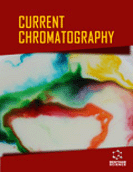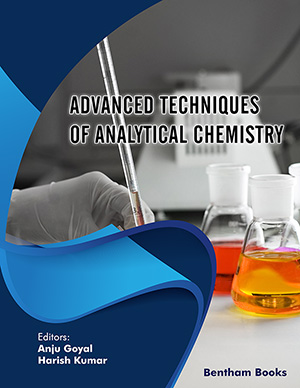Abstract
Background: The application of enantioselective capillary electrophoresis approach for the assessment of the enantiomeric purity of chiral molecules is receiving increased attention. Abscisic acid is one of the chiral sesquiterpenic plant growth regulators that regulate various ecological and physiological roles in higher plants. Enantiomeric determination of ABA is of great concern because of the different biological activity of its enantiomers.
Materials and Methods: In this study, we investigated the enantioseparation selectivity of ABA by incorporating native β-cyclodextrins (β-CD) and its derivatives as chiral modifiers in the background electrolyte of an enantioselective capillary zone electrophoresis system. Electrophoretic aspects that affect the enantiomeric separation, such as pH, types of β-CD and its concentration, applied voltage, injection pressure and time, were studied and optimised.
Results and Discussions: An enhancement in enantioseparation was achieved in a bare fused-silica capillary (64.5 cm × 50 mm i.d.) using a background electrolyte solution consisting of (2-hydroxypropyl)- β-CD (80 mM) solubilised in 100 mM phosphate buffer adjusted to pH 5.9 with NaOH, operated under normal polarity mode (25 kV) at 25°C, and using hydrodynamic injection (75 mbar for 10s). Relative standard deviations of (intra- and inter-day) ≤ 3.23% and ≤ 1.39% for migration times and enantiomeric fractions (EF) were achieved using the proposed method.
Conclusion: The proposed chiral capillary electrophoretic method offers advantages in terms of enantioselectivity and analysis times, which can serve as a reliable platform for the stereoisomeric analysis of ABA.
Keywords: Enantioselective capillary zone electrophoresis, enantiomer separation, abscisic acid, beta-cyclodextrins, chiral selectors, (2-hydroxypropyl)-β-CD.
[http://dx.doi.org/10.1016/j.chroma.2016.08.029] [PMID: 27558357]
[http://dx.doi.org/10.1002/elps.200900770] [PMID: 20533328]
[http://dx.doi.org/10.1016/j.aca.2015.10.035] [PMID: 26703249]
[http://dx.doi.org/10.1146/annurev.pp.39.060188.002255]
[http://dx.doi.org/10.1111/j.1365-313X.2008.03748.x] [PMID: 19036030]
[http://dx.doi.org/10.1016/j.chroma.2003.09.004] [PMID: 14735990]
[http://dx.doi.org/10.1093/jexbot/53.366.27] [PMID: 11741037]
[http://dx.doi.org/10.1016/B978-0-12-811562-6.00005-0]
[http://dx.doi.org/10.1007/BF00385556] [PMID: 24469703]
[http://dx.doi.org/10.1002/(SICI)1099-1565(199607)7:4<209::AID-PCA292>3.0.CO;2-H]
[http://dx.doi.org/10.1016/S0021-9673(00)00954-7] [PMID: 11215905]
[http://dx.doi.org/10.1016/B0-12-226770-2/01931-1]
[http://dx.doi.org/10.1081/AL-120015005]
[http://dx.doi.org/10.1081/JLC-120021278]
[http://dx.doi.org/10.1016/j.chroma.2013.03.014] [PMID: 23578483]
[http://dx.doi.org/10.1021/cr9411583] [PMID: 11749326]
[http://dx.doi.org/10.1080/10826079808005880]
 14
14 3
3


















